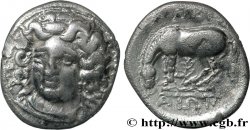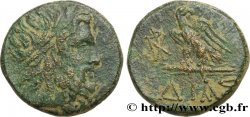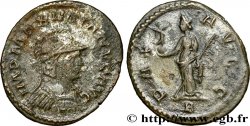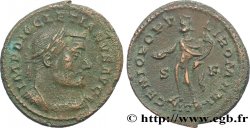正面
正面的文字 ANÉPIGRAPHE.
正面的说明书 Tête de la nymphe Larissa de face tournée de trois-quarts de face à gauche, les cheveux retenus par un bandeau (l'ampyx).
背面
背面的文字 LÉGENDE PARTIELLEMENT INVERSÉE.
背面的说明书 Cheval à droite, levant l'antérieur gauche.
背面铭文 SAIWN/ LARI
背面的翻译 (des Larissa).
评论
历史细节
THESSALY - LARISSA
(400-344 BC)
Larissa, the most important city of Thessaly, takes its name from one of the daughters of the mythical king Pelasgos. Built on the right bank of the Peneios, the city was famous for its horse breeding and Thessalos, the eponymous hero of the region, trained wild bulls there.. When Philip II of Macedon invaded Thessaly in 353 BC. -VS. , he installed democratic governments there under the protection of Macedonian garrisons responsible for maintaining order. He created four great districts at the head of which he placed tetrarchs, Simos being that of the district of Larissa. This organization was to last only eight years because, in 344 BC. -VS. , Philip II invades Thessaly again, drives out Simos and incorporates the whole province into the kingdom of Macedonia, ending the coinage. For the coinage of Larissa, there are three studies: the article by F. Hermann, Die Silbermünzen von Larissa in Thessalien, ZfN. 35 (1925), the article by T. R. Martin, The Chronology of the fourth century B. VS. , Facing Head Silver Coinage of Larissa, MN. 28, 1983 and the article by C. Lorber, The Early Facing Head Drachms of Thessalian Larissa, in Florilegium Numismaticum, Studia in Honorem U. Westermark, Stockholm 1992.










 对产品描述纠错
对产品描述纠错 打印
打印 分享我的选择
分享我的选择 提问
提问 Consign / sell
Consign / sell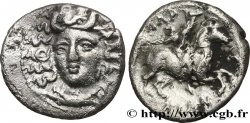
 产品介绍
产品介绍


